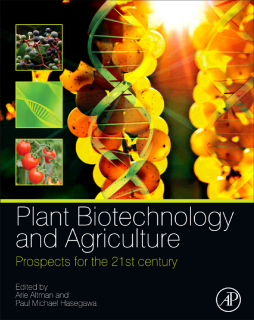
Additional Information
Book Details
Abstract
As the oldest and largest human intervention in nature, the science of agriculture is one of the most intensely studied practices. From manipulation of plant gene structure to the use of plants for bioenergy, biotechnology interventions in plant and agricultural science have been rapidly developing over the past ten years with immense forward leaps on an annual basis.
This book begins by laying the foundations for plant biotechnology by outlining the biological aspects including gene structure and expression, and the basic procedures in plant biotechnology of genomics, metabolomics, transcriptomics and proteomics. It then focuses on a discussion of the impacts of biotechnology on plant breeding technologies and germplasm sustainability. The role of biotechnology in the improvement of agricultural traits, production of industrial products and pharmaceuticals as well as biomaterials and biomass provide a historical perspective and a look to the future. Sections addressing intellectual property rights and sociological and food safety issues round out the holistic discussion of this important topic.
- Includes specific emphasis on the inter-relationships between basic plant biotechnologies and applied agricultural applications, and the way they contribute to each other
- Provides an updated review of the major plant biotechnology procedures and techniques, their impact on novel agricultural development and crop plant improvement
- Takes a broad view of the topic with discussions of practices in many countries
"This book is a highly readable compendium of comprehensive essays on the present-day state of agricultural plant biotechnology. Each chapter is written by experts from across the globe. The book begins with a discussion of the rationale for the use of biotechnology in agriculture. It then addresses the principles of crop domestication including the increasing role of biotechnology, and provides a brief overview of the biology and genetics of crop biotechnology. The rest of the book describes the techniques and technologies used in plant biotechnology. Contributors discuss research methodologies as well as biotechnology crop development practices; topics include genetic engineering, germplasm collecting, and proteomics. Special coverage is given to the role of biotechnology in alleviating food availability problems and poverty in developing nations. Each chapter ends with a brief conclusion and ample primary references. Charts, figures, and graphs support the text when appropriate. Summing Up: Recommended. All students, researchers/faculty, and professionals; informed general readers"--CHOICE, August 2012, Vol. 49, No 11, page 152
